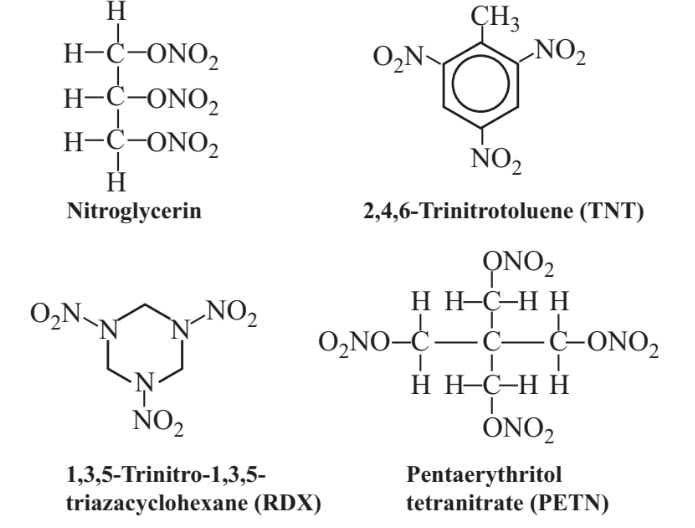16.3: Substances That Explode, Burn, or React Violently
- Page ID
- 285400
Substances that react violently and rapidly enough to cause fires, explosions, or corrosive destruction of materials are those that have been used most commonly in terrorist attacks and that have the most potential for future use. Reactive substances, such as explosives used to quarry rock, have many commercial uses and are therefore widespread and potentially readily available, both to legitimate users and terrorists.
Explosives are the most common materials used in terrorist attacks. The devastating effects of explosives have been illustrated by a number of incidents including the 1995 bombing of the Murrah Federal Building in Oklahoma City, the 2003 bombing of the British consulate in Turkey,and frequent bombings of various sites in Iraq in 2003/2004. Explosives can be made from readily available materials; the Murrah Federal Building was brought down by a mixture of ammonium nitrate fertilizer and diesel fuel. Gunpowder has long been prepared from charcoal, sulfur, and nitrate salts. Nitroglycerin, the explosive in dynamite, is made from glycerin, a byproduct of soap preparation, reacted with nitric and sulfuric acids (most amateurs who attempt this synthesis succeed in blowing their heads off). More sophisticated explosives consist of organic compounds containing nitrogen and oxygen, such as 2,4,6-trinitrotoluene (TNT), 1,3,5-trinitro-1,3,5-triazacyclohexane (RDX), and pentaerythritol tetranitrate (PETN). Figure 16.1 gives structural formulas of several explosives that could be used by terrorists.

The potential of flammable substances to cause death and destruction was shown by the jet-fuel-fed fires that brought down both towers of the New York World Trade Center in the 9/11/01 attack. Fires set on ruptured petroleum pipelines have caused significant destruction in Iraq in 2003/2004. When mixed with air, vapors of flammable liquids can cause massive explosions. Adding to the hazard of flammable substances are oxidants that release oxygen to react with combustible materials. In 1997, oxidant sodium chlorate, NaClO3, an ingredient of emergency oxygen generators in aircraft that were being transported contrary to regulations in the cargo hold of a Valujet airplane, caused a devastating fire of aircraft tires that brought the aircraft down in the Florida Everglades.
By their nature, fuels are flammable substances, as are some common industrial solvents. Flammable fuels and solvents are used throughout almost all societies and are readily available to those who would use them for malevolent ends. Adding to their availability is their transport by truck, rail, and pipeline. The hazard of flammable substances is increased by the ease by which they and their vapors can be distributed through sewers, elevator shafts, subway tunnels, and other conduits.
Corrosive substances that destroy materials and flesh have been used in attacks on equipment and people. Concentrated sulfuric acid, which dehydrates and destroys flesh, has been used by criminals to blind people. Corrosive materials can be used to damage relays and other devices in communications equipment as a means of sabotage.
A major concern with respect to flammable, reactive, and explosive substances is their widespread industrial use. Actually, such materials are relatively safe inside of manufacturing plants and properly secured storage areas. The greater threat comes from their transport. This is illustrated by very frequent transportation accidents involving rail cars, trucks, barges, and pipelines that result in explosions, fires, and release of corrosive materials. Hijacking of trucks transporting hazardous materials and even trucks driven by terrorists are a particular concern. The practice of industrial ecology and green chemistry can help minimize such threats by, for example, promoting the production of hazardous substances in minimal quantities where needed and as needed. “Just-in-time” production minimizes storage of hazardous substances.


